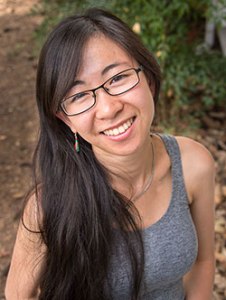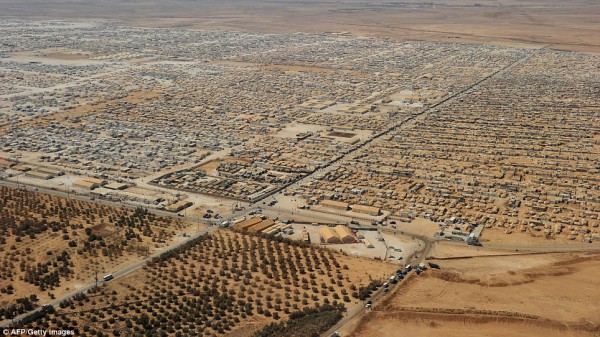If You Put Something Else in Your Pipe and Smoke It, Are You Safer?
September 10, 2014 by Robert Abare ’13

Kaki Bennett ’15 works with Associate Professor Karen Bernd to determine whether e-cig vapor is as benign as proponents claim.
The dangers of smoking cigarettes are widely known. But what do most people believe about about up-and-coming alternatives-electronic cigarettes and hookah-which are often touted as safer and less harmful? Two teams of student researchers at Davidson College have been working with faculty mentors to shed some light on these smoking devices for the benefit of both the scientific community and the public.
Kaki Bennett ’15 has been researching e-cigarettes through a Davidson Research Initiative (DRI) grant with Associate Professor of Biology Karen Bernd, a longtime researcher of environmental pollutants.
Meanwhile, Robert Hagerty ’15 and Vishal Mehta ’15, another DRI student, are studying the chemical composition of hookah and its varying components with Associate Professor of Chemistry and Chair of Environmental Studies Cindy Hauser. Hauser, an expert in particle chemistry, has been conducting hookah studies for three years.
Exposing E-Cigs
Bennett originally told Bernd that she wanted to study the effects of cigarette smoke, but then discovered the burgeoning market of e-cigs. “At first, no one seemed to know what e-cigs were or where to find them,” Bennett explained. “Then they quickly became popular. I suddenly started finding them in magazine advertisements and on the shelf in grocery stores and gas stations.”
Unlike a traditional cigarette, which creates smoke through the process of combustion, an e-cig uses a battery-powered heat coil to vaporize a flavored liquid that contains nicotine. Because e-cigs produce vapor rather than smoke, users refer to themselves as “vapers” and their activity as “vaping.” The unique way e-cigs convert a liquid into a gas leads many makers of e-cigs to claim the product is safer than conventional cigarettes.
Bennett decided to put those claims to the test in the lab by exposing rat lung cells to e-cig vapor and observing how it affects the cells. She places the cells, grown in small plastic trays, inside exposure chambers that she fills with e-cig vapor. To determine the appropriate levels of vapor for exposure, Bernd and Bennett use standards set by the International Organization for Standardization (ISO) for researchers studying conventional cigarettes. They can’t use ISO standards for e-cigs simply because ISO standards for e-cigs have not been determined.
Hookah Who’s Who
Hauser has been involved in the study of hookah for the past three years in collaboration with former student researchers Joe Cline ’11, Mac Gilliland ’12, Tim Oh ’13 and Jessica Annonio ’14. Current students Robert Hagerty ’15 and Vishal Mehta ’15 are continuing the work.
A hookah, also called a water pipe, is a vase-like smoking device. The user places a hot charcoal brick over a bowl filled with a syrupy tobacco mixture called “shisha.” The brick and mixture are separated by a fine conductive mesh so that the two ingredients don’t touch.
When the smoker sucks on a tube attached to the hookah, the hot charcoal causes the shisha to smoke. The smoke travels into the hookah’s water jar, where it passes through water or another liquid such as wine or orange juice. The smoke that passes through the liquid is then inhaled by the smoker.
Vendors and users of hookah often claim that the device is less harmful than conventional smoking because hookah smoke is filtered through water. Furthermore, the shisha does not undergo direct combustion like cigarette tobacco, but is instead heated indirectly by the charcoal brick.
Hauser noted, however, that the charcoal contains many of the same dangerous chemicals as cigarette smoke, including carcinogenic polycyclic aromatic hydrocarbons (PAHs). To focus Hagerty’s and Mehta’s research solely on the chemical composition of the shisha and the smoke it produces, Hauser decided to replace the charcoal with a ceramic heating plate.
A Safer System?
Hauser has found that attendees at research presentations sometimes believe that replacing the charcoal brick with the heating plate creates a safe system. Hauser disabuses them of that notion. “I remind those learning about our project that our goal is not to find a safer way to smoke a hookah,” Hauser said. “There is no safe way to smoke a hookah.”
Mehta and Hagerty are specifically studying the chemical composition of hookah smoke, the shisha, and the contents of the water jar. Hagerty is researching the presence of metals, like copper and nickel, while Mehta is analyzing the presence of pyrazines-potentially harmful molecules of carbon, nitrogen and hydrogen.
Hauser steered the two students toward the direction of their study after hearing from public health researchers at a hookah research conference in Abu Dhabi. Researchers in attendance said they needed more information on the metal and pyrazine content of hookah smoke to determine the degree to which it presents a health hazard.
Given that interest, Hagerty’s and Mehta’s projects may play significant roles in informing the scientific and public health community of the extent of the dangers posed by smoking hookah.
To analyze metals in the hookah smoke, Hagerty uses a pump to pull smoke from the hookah and send it through a filter. He then digests the filters with nitric acid, which leaves the metals behind. Hagerty processes the metals using a flame atomic absorption spectrometer (FAAS). The FAAS ignites the metals, and an electronic eye in the FAAS records changes in the flame’s color. The color change correlates to the types of metal present.
Mehta uses a similar process called solid phase micro extraction (SPME) to collect pyrazines in the shisha. He uses a fiber coated with compounds to absorb particles dislodged from the shisha, and then inserts the fiber into a gas chromatograph mass spectrometer (GCMS) which detects the compounds on the fiber. The results of the GCMS allow Mehta to map out the pyrazine content of the shisha.
A Healthier Body of Knowledge
E-cigs and hookah are similar in that they are often promoted to consumers as “less dangerous” alternatives to conventional cigarettes. In fact, e-cigarettes originated as smoking cessation devices.
The safety claims were one reason Hauser began her hookah research. “Hookah is often marketed as a less risky form of smoking because the smoke is filtered through water,” she said. “I was initially intrigued because I didn’t think of water as a good filter.”
Indeed, Hauser’s students are finding that hookah’s reputation as a better smoking option may not be credible. Hagerty’s results from the FAAS have revealed the presence of nickel, copper, magnesium and chromium in the hookah smoke-all of which have the potential to cause significant harm if inhaled in large quantities.
It remains to be seen, however, exactly how hookah and e-cigs compare to conventional cigarettes. The Davidson research projects are not intended to compare alternative smoking devices to the effects or chemical composition of cigarettes.
“We aren’t trying to cure all ills, but rather lay the groundwork so that other researchers can use our results as a measuring stick,” said Bernd. “The best thing that can happen in research is that the questions you ask lead to more questions.”
Hauser also hopes that the hookah research may help public health officials make more informed decisions. “We are asking targeted questions to help the health community determine the best policies and regulations for the public’s safety,” she said.
Second Hand Science
Both the hookah and e-cig researchers are glad that their projects are attracting interest both inside and outside academia. Hauser praised her students for their willingness to become ambassadors for their scientific research. “Both Robert and Vishal are eager to discuss their projects with those who’d like to learn more,” she said.
Likewise, Bennett’s e-cig project has attracted interest. “I love my project because it starts conversations,” she said. “I presented on e-cigs at a conference in April, and people came up to me afterward to talk about their friends or family who smoke e-cigs. Everyone knows someone who smokes, either with e-cigs or regular cigarettes.”
Bennett has become so familiar with e-cigs through her research she’s now spotted wearing them in her hair to hold her bun in place. But, as cozy as Bennett may be with the devices, Bernd pointed out, “She hasn’t once tried smoking one!”
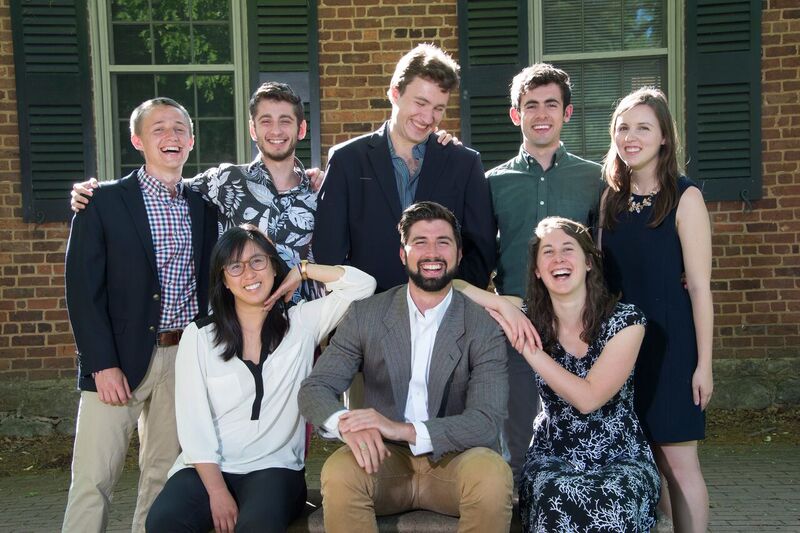
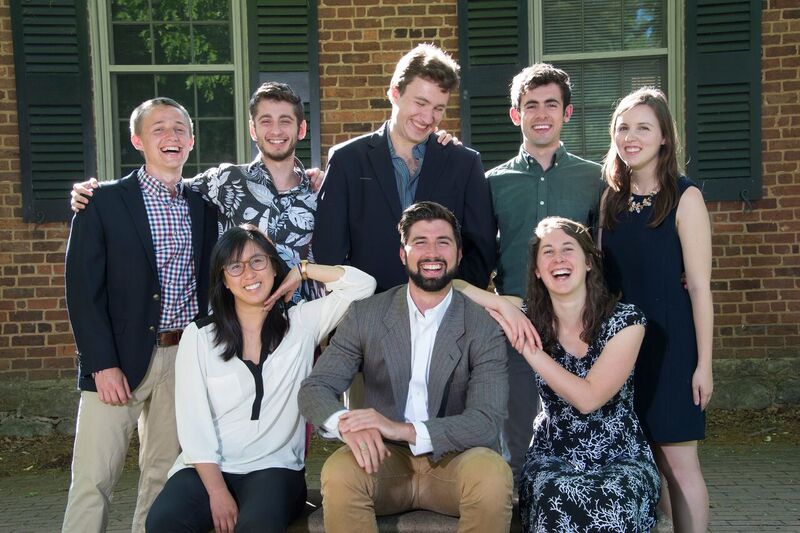
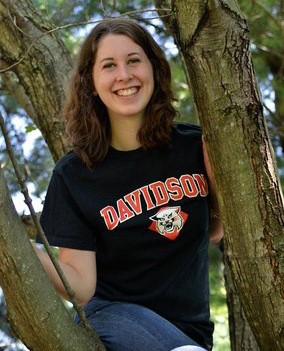
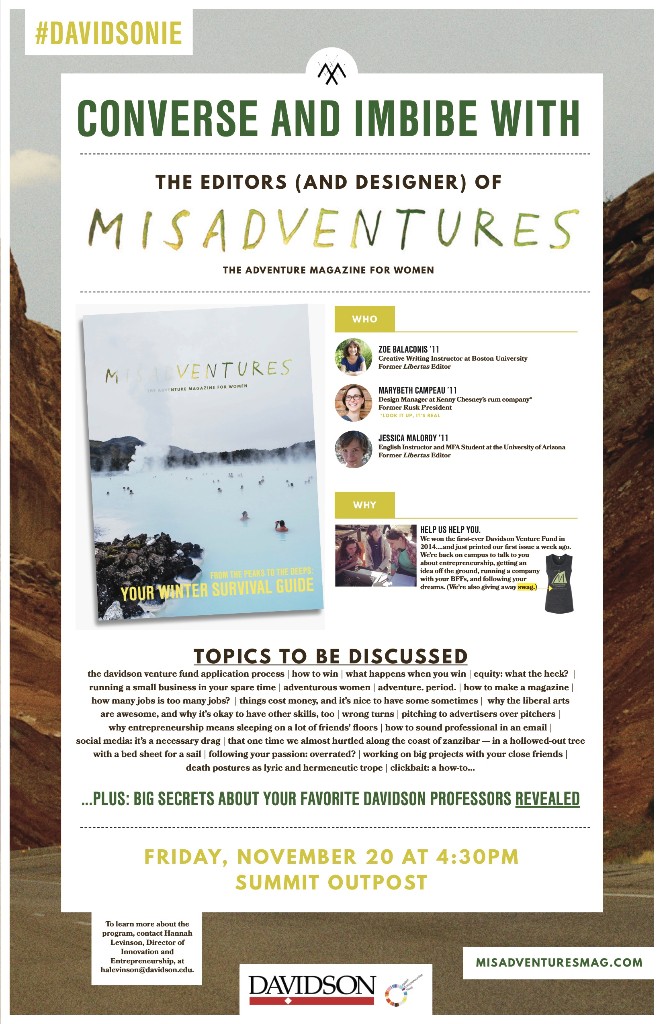

 francophone studies. She will spend her Fulbright year working with Guy Berchem at the Luxembourg Institute of Health, researching less-invasive biopsy techniques for patients with non-small-cell lung cancer. At Davidson, Belk Scholar Bennett has been researching the effects of electronic cigarette vapor on rat lung cells.
francophone studies. She will spend her Fulbright year working with Guy Berchem at the Luxembourg Institute of Health, researching less-invasive biopsy techniques for patients with non-small-cell lung cancer. At Davidson, Belk Scholar Bennett has been researching the effects of electronic cigarette vapor on rat lung cells.
 began last summer in Jordan, analyzing how the influx of Syrian refugees impacts the quality of access to medical care for non-Syrian r
began last summer in Jordan, analyzing how the influx of Syrian refugees impacts the quality of access to medical care for non-Syrian r deepening her work in education in Asia.
deepening her work in education in Asia.